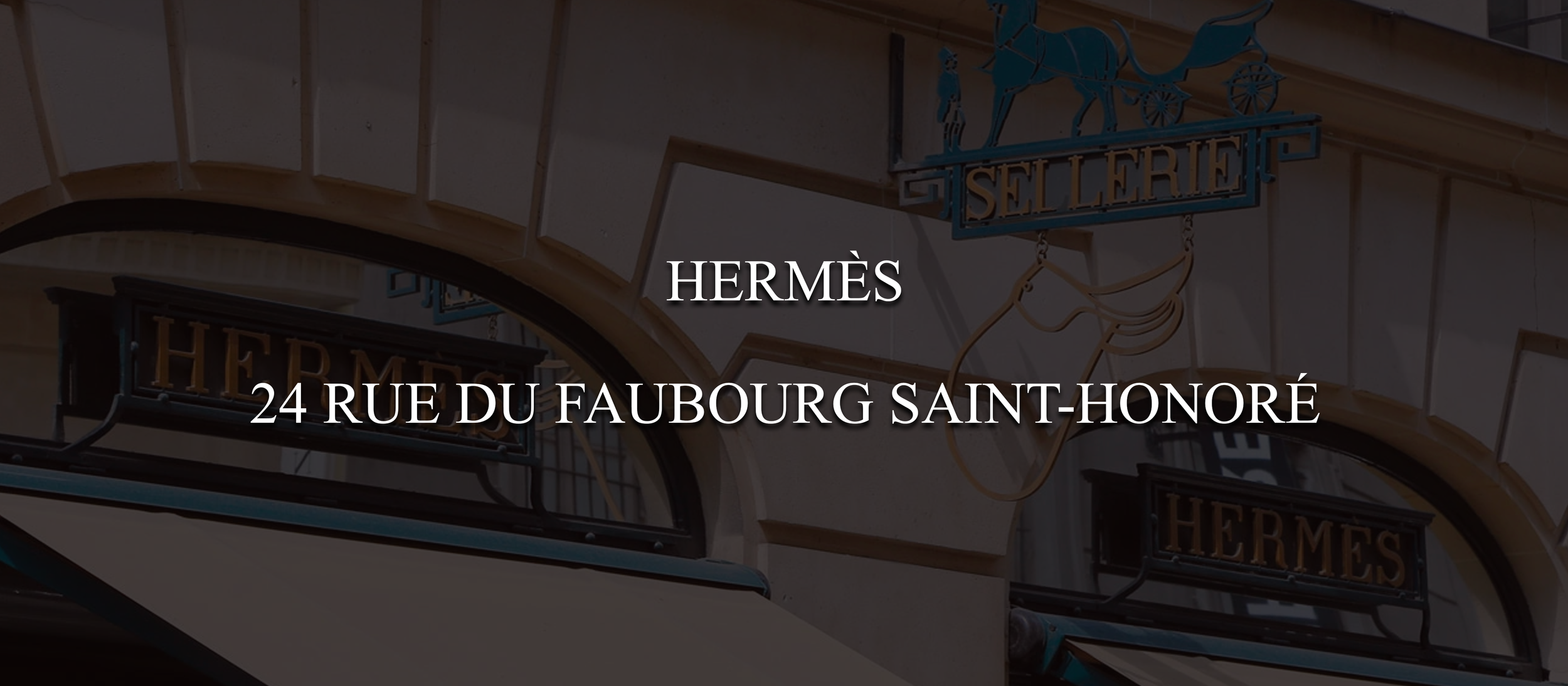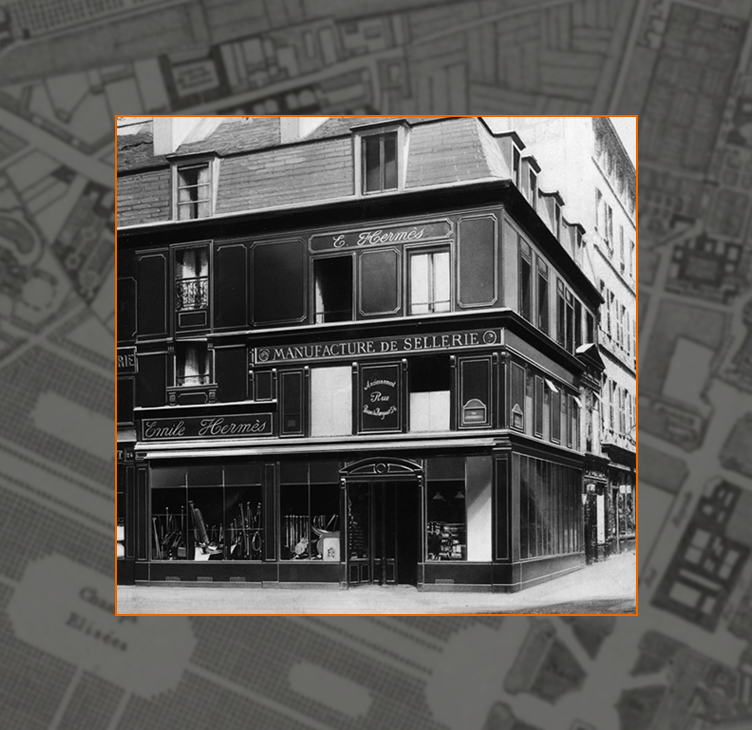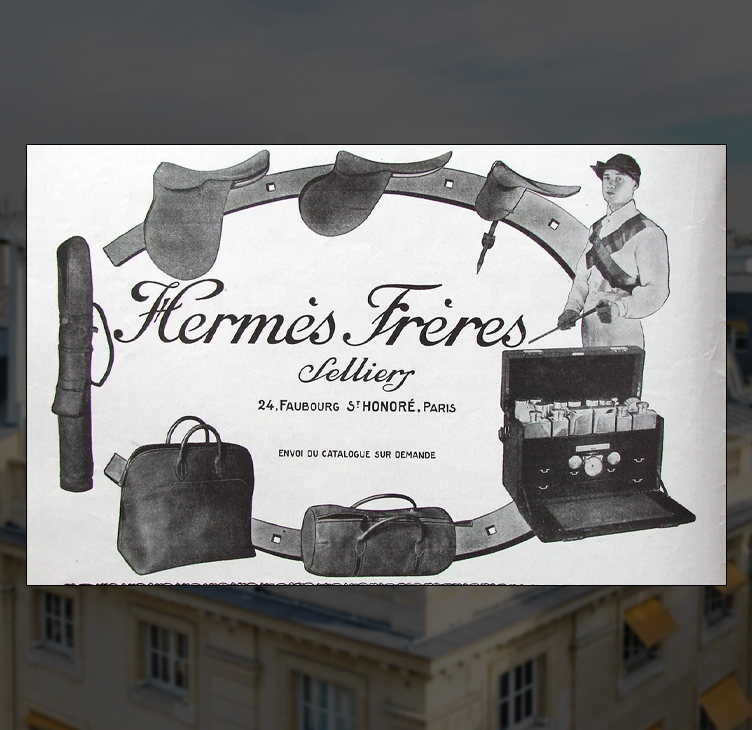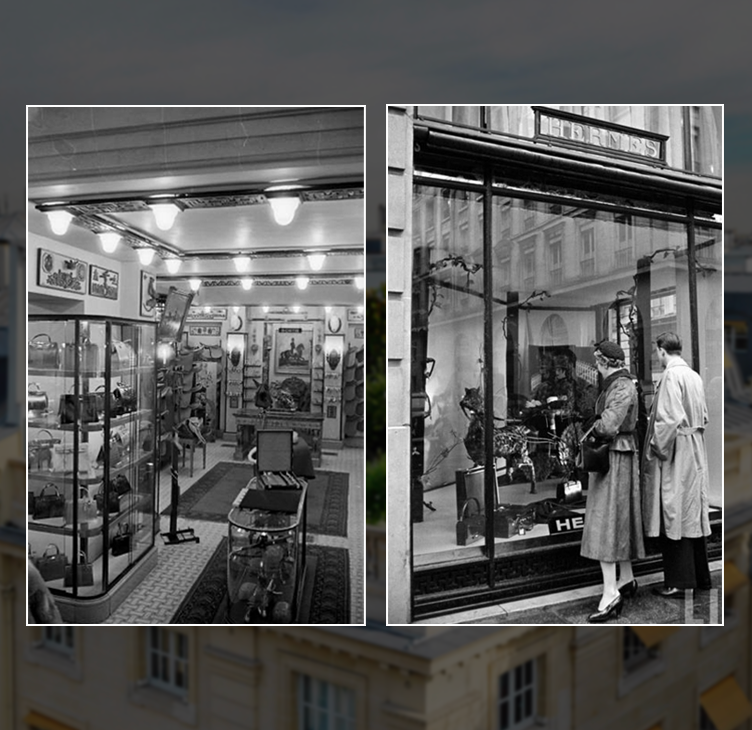Hermès, 24 rue du Faubourg Saint Honoré
The story of the Hermès house started almost 50 years before its opening on Rue du Faubourg Saint Honoré with one man, Thierry Hermès, born in 1801 from a family emigrated to Prussia and who arrived in France in 1828. Quickly after his arrival, he decided in 1831 to move from the capital to a small town in normandy named “Pont-Audemer” where he would complete his apprenticeship as a horse harnesses maker.
The choice of this location to conduct his training was actually strategic since Normandy had been since the middle age a region famous for leather manufacturing due to horse breading and a developed trade of animal skins facilitated by the nearby commercial ports and the United-Kingdom.
Thierry Hermès, founder of Hermès.
© Hermès
6 years later, after he completed his apprenticeship, Thierry Hermès moved back to Paris to install his own workshop in the 9th district near the Boulevard des Capucines where he would manufacture harnesses, bridles, horse collars for the best stagecoaches companies of that time. He would die in 1878, leaving to his son and two grand sons his unique know-how.
In 1859, his son, Charles-Emile took over his father business and decided to direct the Hermès production towards a more wealthy and noble clientele. One of the key element of this strategy happened in 1880 with the relocation of the Hermès boutique on 24 rue du Faubourg Saint Honoré in a house shop which would become throughout the years one of the most prestigious store in the world. This location was not chosen by chance and was in fact very strategic, close to the Champs-Elysée district where the most luxurious stagecoaches companies were located but also near by the large equestrian stables of the Elysée Palace and the numerous townhouses located on this Faubourg.
Hermès, 24 Faubourg Saint-Honoré in 1880.
© Hermès
This street was also the place where all the horse riders who were going to Bois de Boulogne or Longchamp horse races had to pass by. Quickly other saddlers would emulate Hermès and decided to relocate on rue du Faubourg Saint-Honoré or nearby in the 8th district. However, thanks to its high quality products, dynamism and commercial strategy, Hermès faced successfully this strong competition and even bought back some of these other companies.
View from Rue Royale of rue du Faubourg Saint Honoré in the early 20th century.
© Léon et Lévy / Roger-Viollet
Working closely with his two sons, in 1889 the company was renamed “Hermès Père et Fils” and in 1893, the oldest son of Charles-Emile, Adolphe, naturally became director of the company. But it was under the impulsion of the young and ambitious Emile-Maurice, the youngest son of Charles-Emile, that the company opened to broader markets and to an even more elitist clientele such as the Imperial family in Russia, Baron Rotschild, Louis Renault and so on…
“Hermès Frères Selliers”advertisement Print from 1924.
But besides this large success at the beginning of the 20th century symbolized by a turnover of 600k francs and 70 employees, before the first world war Hermès had to face new challenges and to adapt to new times with the quick development of the car. Emile-Maurice, sensing that the world was slowly changing and entering a new area, decided in the 1920s to adapt to the modernity by proposing a broader range of Hermès products to travelers and not only to horse riders, while maintaining the unique know-how inspired by saddlery. Apparel and travel bags were now produced for automotive enthusiasts and women were proposed different kind of leather accessories but also a broad range of jewels and high fashion pieces.
Hermès boutique on 24 rue du Faubourg Saint Honoré in the 1950s
1922 marks an important date in the expansion of the brand as Emile Hermès decided to acquire the n°24 of the Faubourg which was then refurbished and expanded considerably into the building that we know today. Today the Hermès boutique occupies n°24 to 30 of the Faubourg and has undergone a refurbishment and expansion in 2007.
View of the Hermès boutique in the 70s







